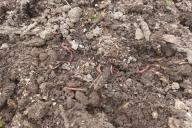Currants are one of the most unpretentious and productive berry crops in gardening.
A competent approach to cultivation allows you to obtain abundant harvests of juicy berries over a long period of time without changing the location of the bush.
Optimal growing times
The duration of productive currant cultivation in one place is 15–20 years.
When favorable conditions are created, some varieties are capable of bearing fruit for up to 25 years. An important factor is the correct choice of planting site and regular care of the plant.
Factors Affecting Growth Duration
The period of currant cultivation depends on many conditions. The most significant are:

Soil quality
Fertile soil serves as the basis for long-term growth of currants. The plant prefers loamy or sandy soils with neutral acidity.
Regular application of organic fertilizers maintains the required nutrient levels.
Illumination of the area
Currants need sufficient sunlight. Shading leads to a decrease in yield and a reduction in the period of productive cultivation.
A place with some shade during midday hours is considered optimal.
Soil moisture
Regular watering ensures stable development of the bush. Stagnant water or prolonged drought negatively affects the lifespan of the plant. Mulching the trunk circle helps maintain an optimal water regime.
Features of care for prolonging the growing period
Trimming
Timely removal of old, diseased and damaged branches stimulates the formation of young shoots.
Sanitary pruning is carried out annually in spring, and formative pruning is carried out every 3–4 years. Proper pruning allows you to significantly extend the period of productive cultivation of the bush.
Top dressing
Fertilizer application maintains soil fertility. In spring, the plant needs nitrogen fertilizers, in summer - complex mineral fertilizers, in autumn - phosphorus-potassium fertilizers. Organic fertilizers are applied once every 2-3 years.
Protection from diseases and pests
Preventive treatment against pests and diseases increases the lifespan of the bush. Regular inspection of plants allows you to identify problems at an early stage. Timely protective measures prevent weakening of the bush.
Signs of the need to renew plantings
Decreased crop yield
A decrease in the number and size of berries indicates the exhaustion of the bush. With proper care, a serious decrease in yield is observed after 15-20 years of cultivation.
Small, light-colored leaves indicate that the plant is not receiving enough nutrients. Such symptoms often appear in old bushes even with regular fertilizing.
Lack of young shoots
The cessation of new shoots formation indicates the bush is exhausted. This condition is a clear sign of the need to renew the currant plantings.
For reference
Currant is a genus of dicotyledonous flowering plants of the monotypic family Gooseberryaceae of the order Saxifragales, which includes about 200 natural species.








